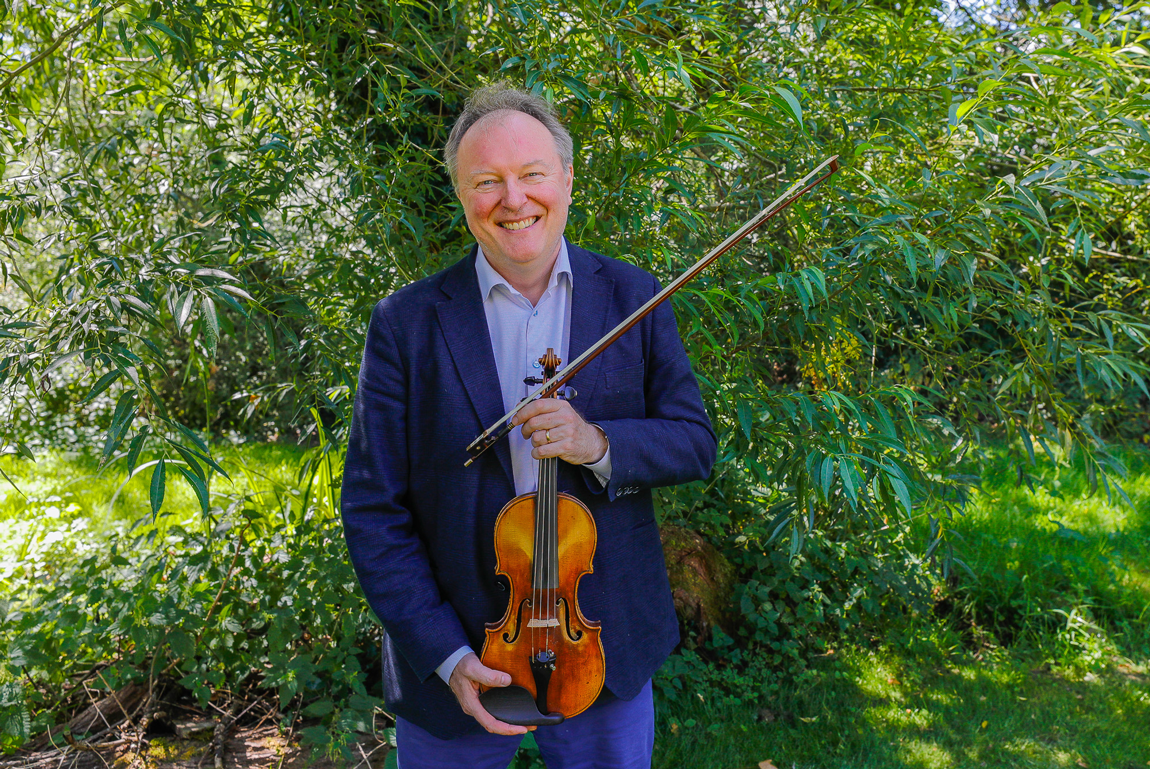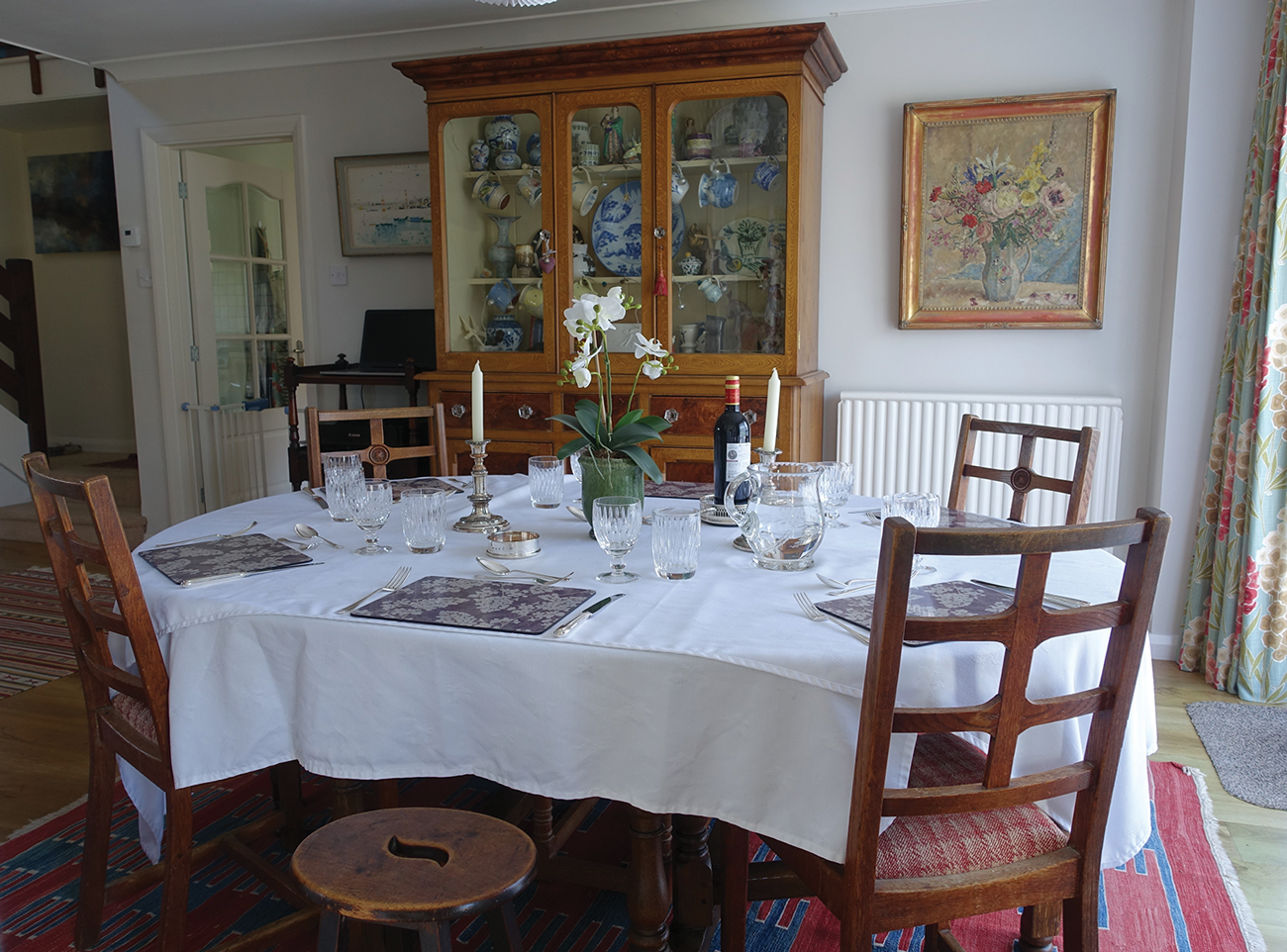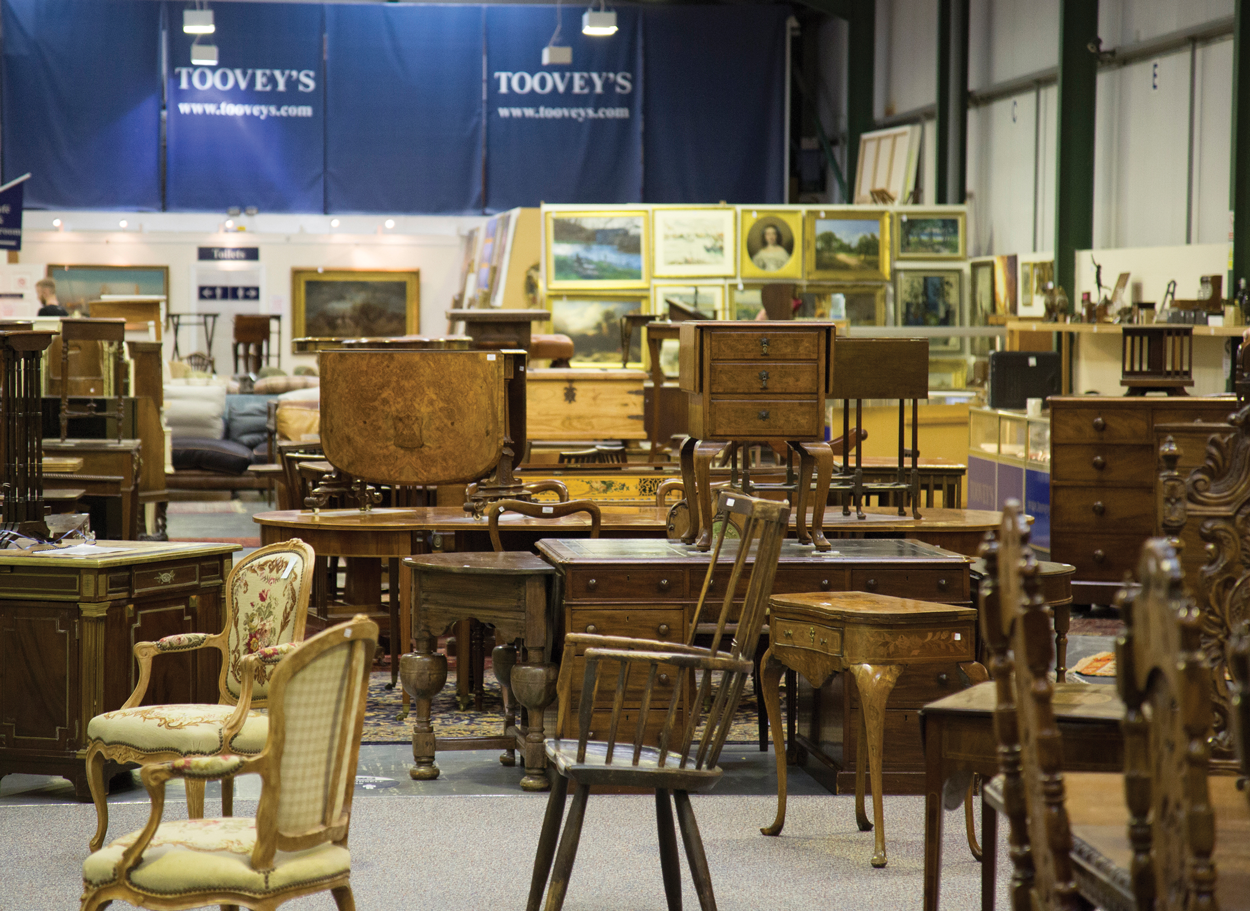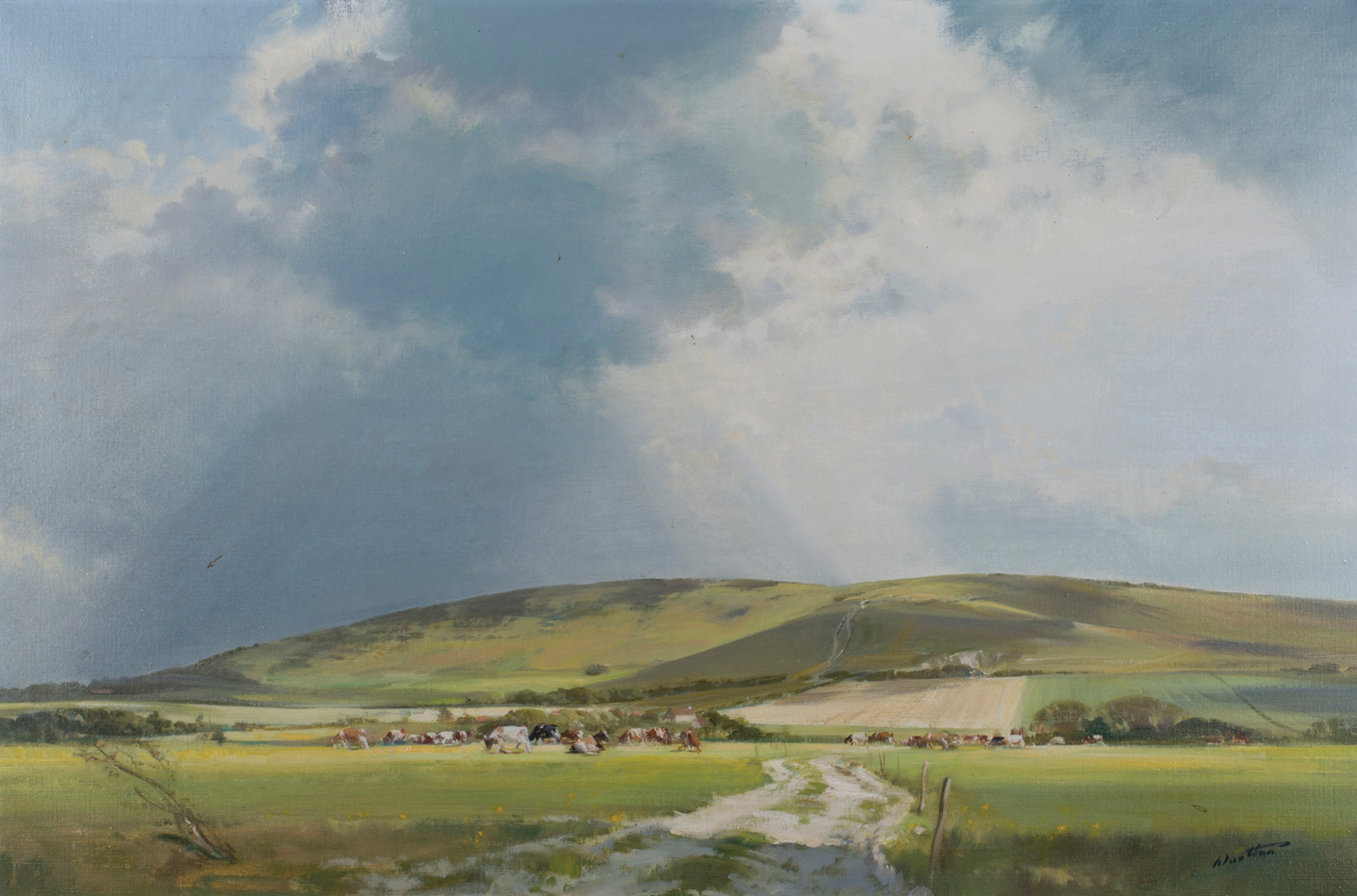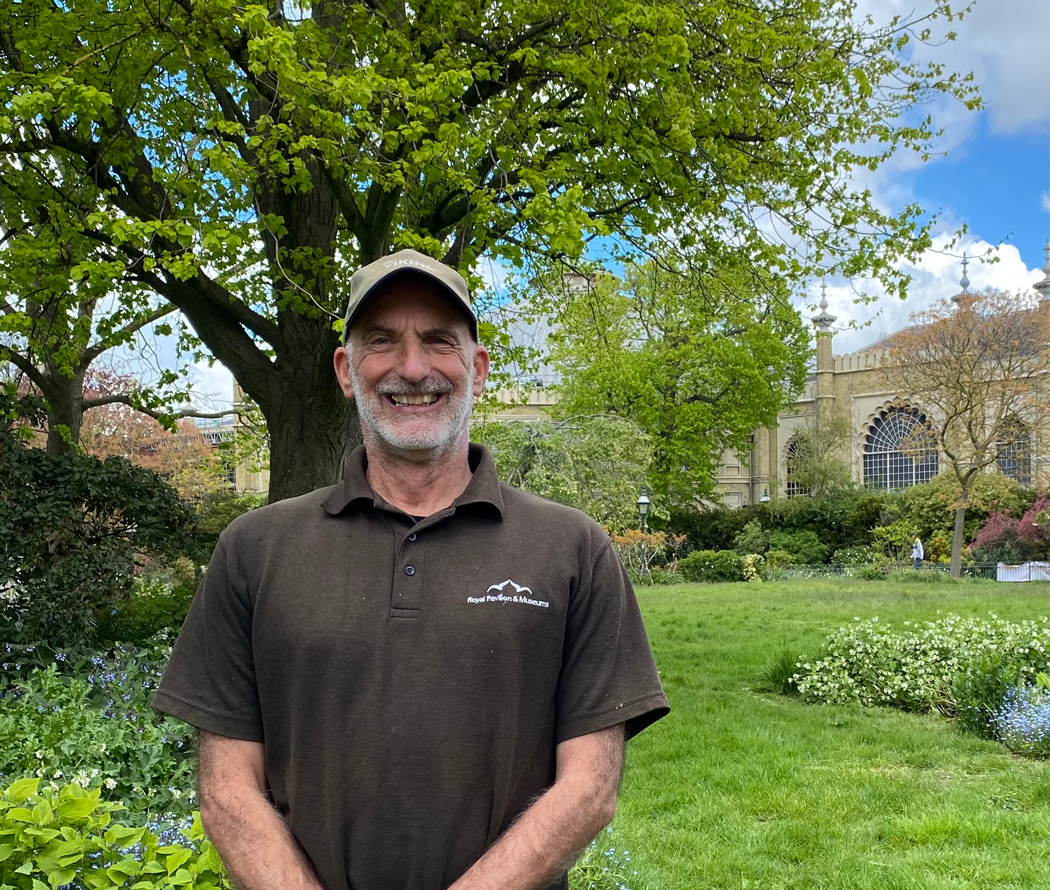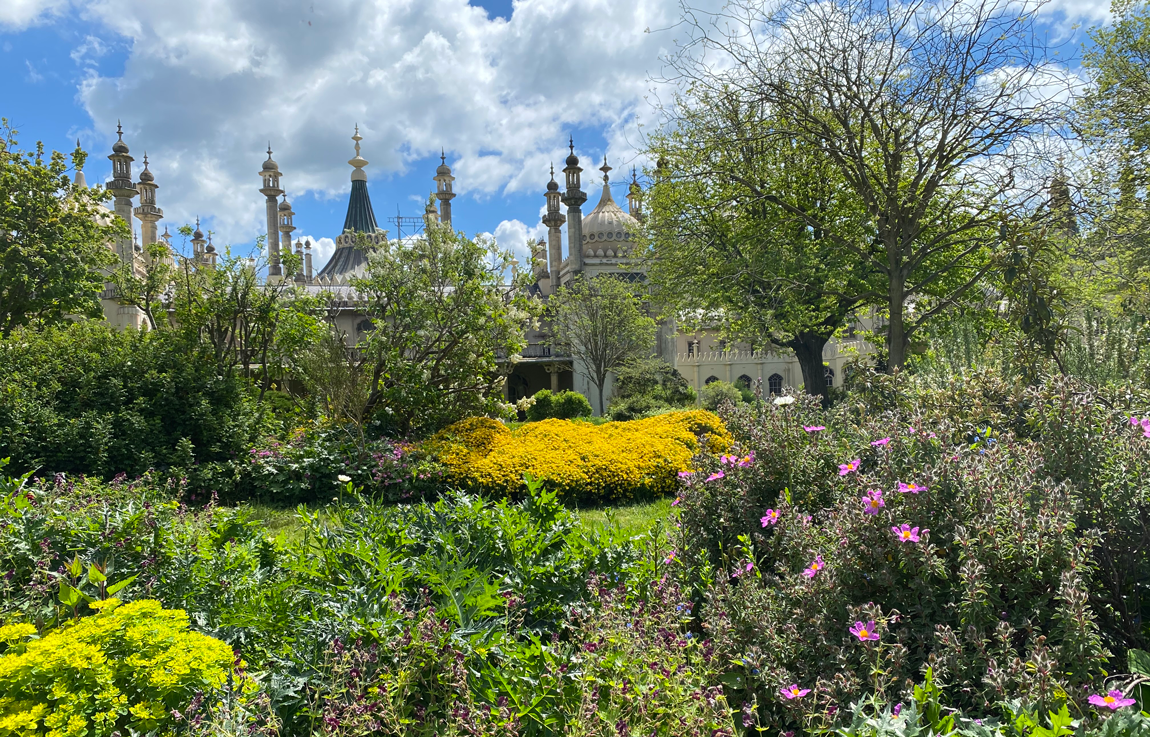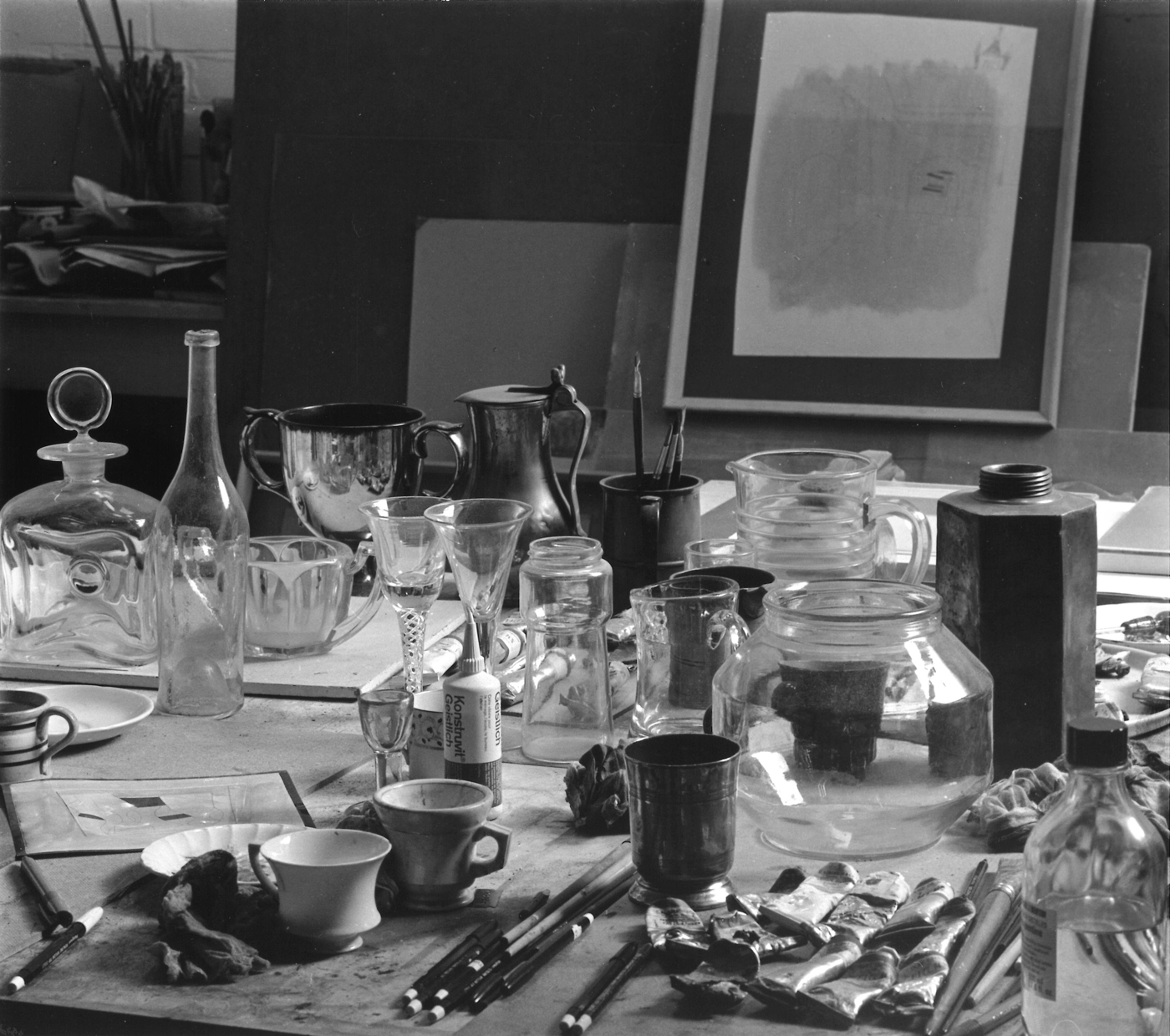
This week I am in the company of Pallant House Gallery Director Simon Martin exploring the gallery’s latest exhibition Ben Nicholson: From the Studio.
I ask Simon about the central themes of the exhibition, he replies “During a career spanning six decades Ben Nicholson used the humble still life as a vehicle for experimentation. It’s interesting how antique objects inspired one of our most famous modernists. There is a real sense of his pleasure in objects in his work.”
The exhibition looks at the inspiration of objects whilst telling the story of the relationships in Ben Nicholson’s life. In particular his artistic and romantic relationships with his wife Winifred Nicholson and Barbara Hepworth.
In a letter to a friend, Nicholson acknowledged ‘I owe a lot to my father…not only from what he made as a painter, but from the very beautiful striped and spotted jugs and mugs and goblets, and octagonal and hexagonal glass objects he collected. Having those things in the house was an unforgettable early experience for me.’
This creative exhibition explores the importance of still life and the studio within Nicholson’s art from his early, highly finished realist paintings to the abstract reliefs that secured his international reputation. Distinctive striped jugs, mochaware mugs and glassware are displayed alongside the paintings, carved reliefs and works on paper which they inspired. The photograph of Nicholson’s studio shows it filled with objects.
Nicholson would move from painting in a realist way to a faux-naïve manner, and then to abstraction with the development of an interplay between space and depth in his famous carved relief panels which explore the same interests but with a new vocabulary.
Ben Nicholson and Barbara Hepworth were influenced by their time in Paris where they spent time with Constantin Brȃncusi, Hans Arp, Pablo Picasso and Georges Braque, all of whom had explored cubism and abstraction through objects.
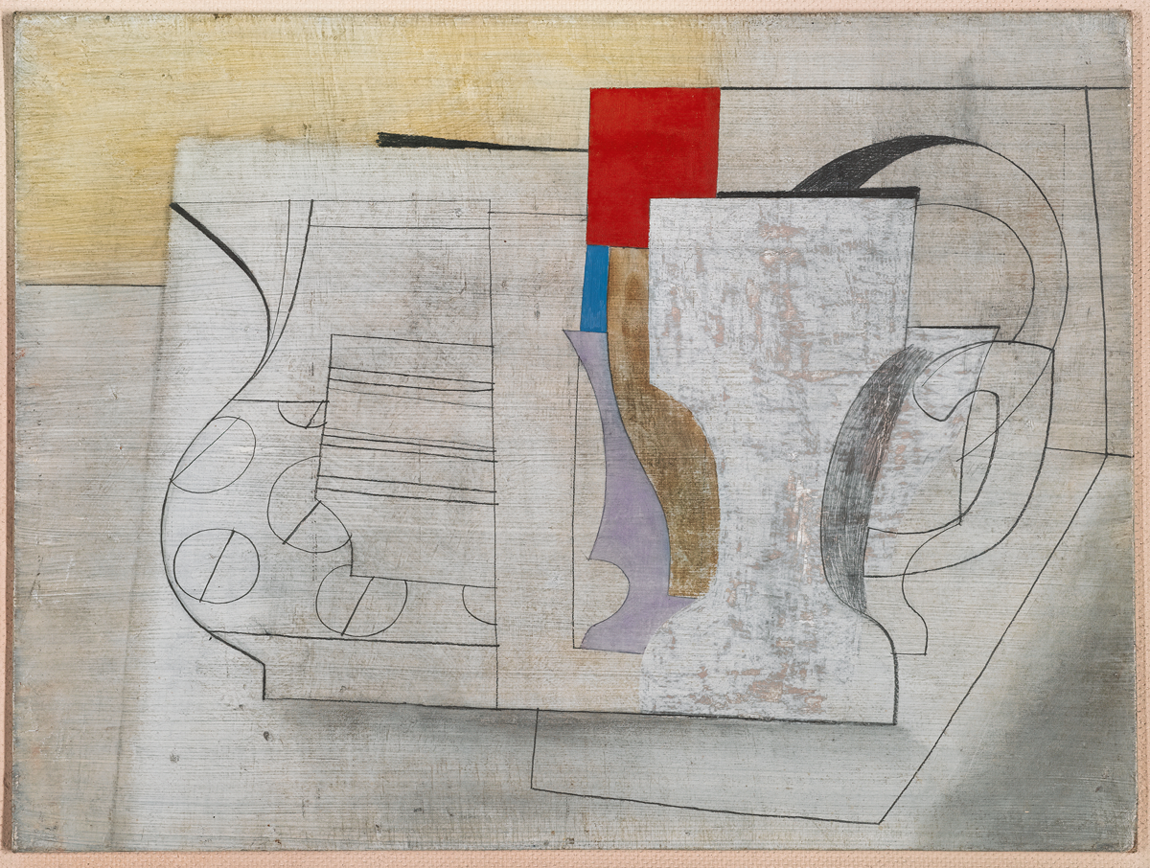
The abstract June 16 – 47 (Still Life) expresses the joy and stability in being accompanied in life by beautiful objects be they humble ceramics, glass, or paintings and sculptures by one of the most important artists of the 20th century.
The wholeness of the art and objects exhibited together reminds me of the aesthetic of Jim Ede’s home Kettles Yard in Cambridge. Jim Ede would acknowledged the influence of Ben and Winifred Nicholson on him.
Simon Martin concludes “These objects were a vital presence in the numerous studios Nicholson inhabited during his life and were of central importance in his still life paintings.”
The beautiful works on show, the very personal narrative provided by the objects and the focus on Nicholson’s relationships gives this refreshing exhibition a rich textural quality – modern but not minimalist.
Ben Nicholson: From the Studio runs at the Pallant House Gallery, Chichester until the 24th October 2021.
